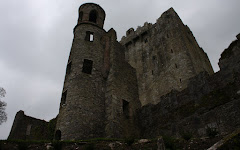(1) The Koreans have mastered functionality and efficiency. Because Pam and I don’t drive much—Seoul traffic can be crazy, too many Seoul drivers are crazy, mass transit is awesome, taxis are relatively cheap, both of our cars are closing in on hooptie status, neither of us has a GPS, and neither of us has figured out how to escape Seoul while driving a car—we took an Express Bus. Always leery of bus travel for distance, I was happily impressed with pretty much all of the transport circumstances: comfortable seats, abundant personal space, lots of leg room, well-mannered passengers, timely departures, competent routing and driving. I could even commit to do Express Bus travel again in Korea.
(2) Korea is mountainous. Only about thirty percent is classified as lowlands, and most of that is coastal. Our bus journey across this mountainous peninsula included a lot of tunnels, many of them in sequence with only seconds of natural light to glimpse the narrow valley situated between mountains. And there were no switchbacks . . . ever; the highway stretched always onward with only gentle curves to bend the straight . . . which led Pam and me to conclude that probably the highway system in Korea is of fairly recent origin.
(3) Korea holds some stunningly beautiful wilderness areas. Seoraksan National Park is gorgeous. The odd thing for Pam and me, though—and we giggled about this multiple times—is that in Korea you can be sharing the “wilderness experience” with truly thousands of people. Granted, we visited the park on one of the busiest weekends—heading into the peak of autumn color—but we trekked some wilderness paths virtually shoulder to shoulder with the masses. Still, I admired the obvious care the Koreans take with their wilderness areas, and I loved the joy expressed on their countenances as they hiked. (Actually, Koreans are renowned for their hiking; it is considered a national pastime. And we observed that many have invested in the clothing and accoutrements of true hikers as well!)
(4) The Buddhists sure know how to pick a setting for a temple and/or monastery. We visited two of the five or six Buddhist sites shown on an area map, one on the seacoast and the other in the mountains of Seoraksan. Such handsome buildings, exquisitely painted in the Buddhist tradition, stood on both sites, but what made both sites especially memorable was location, location, location.
(5) Small Korean cities possess their own unique charm, and Sokcho brilliantly affirmed such an assertion. Certainly its coastal location factors in prominently here . . . and the fact that the sea mesmerizes me every time. A rather cute city over all, Sokcho’s beaches, ports, harbors, and fishing village neighborhoods are its jewels. We didn’t spend quite as much time here as we wanted, so if there is a second visit to this area of Korea, Sokcho rates more time and exploration.
(6) Autumn is a beautiful season of the year anywhere on the planet.













































